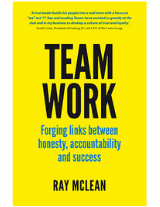The Hawthorn Football Club renewed their contract with Leading Teams at the beginning of the 2013 season. Kraig Grime, Leading Teams Director previously facilitated a Performance Improvement Program (PIP) with Hawthorn from 2005 – 2010, where they won the premiership flag in 2008.
“We worked closely with Leading Teams for a number of years, and have re-engaged their services again in 2013. We see good benefit in having an external facilitator assisting the leadership structures at the club and importantly, to help us keep focus on the things we think are vital for success.”
Let’s reflect on how our work started with the club back in 2005. Alastair Clarkson had just taken over as the new senior coach and had had experience with Leading Teams’ Performance Improvement Program (PIP) from his time at St Kilda and Central Districts football clubs. Mark Evans, the Football Operations Manager at the time, also had some exposure to a PIP at Melbourne FC.
Kraig commented, “My work at the Hawks started fairly slowly. During Alastair’s first year in charge, we asked the players to identify the best leaders in the group and to decide what behaviour should be accepted at the club and what should not. Many great things happened that season. Clarkson, Evans and Robson all bought into the program. Their commitment meant that players came onside from the outset.
Initially, I gathered all the players in a room and asked them to identify how the world would describe them. Given they had finished second-last on the ladder in 2004, it was not a pretty exercise. But I helped the players realise that they were responsible for what the world thought of them. The reason they were described the way they were was because people saw them acting that way. Then I encouraged the players to identify some trademark behaviours for the club they wanted Hawthorn to be.”
Their trademark made reference to the Kokoda trek, which they had done in pre-season. The ‘pillars’ of the trademark were:
- Courage
- Sacrifice
- Mateship
- Endurance
Mark Evans commented, “One of the big challenges early on was that quite a number of players who had been around Hawthorn a long time were resistant to change. There were also a lot of list-management issues. A few older players who were unlikely to be around for the club’s next premiership were told they needed to make way for younger players to develop. Ending the careers of players who had been good servants to the club was confronting, especially when we were also trying to raise the players’ expectations of themselves and each other. There was a lot of discussion about what should be done if someone’s behaviour did not match the expectations.
Towards the end of 2005, the concept of empowering the players, as happens under the Leading Teams program, was something we thought had merit. We agreed that we should encourage people to take up roles of genuine leadership, rather than the senior coach having to dominate the decision-making. That was a big shift in our thinking.”
Once the trademark was agreed upon, the players were left in no doubt about what was acceptable and what was unacceptable. Using the Leading Teams system of empowerment, the players elected Richie Vandenberg as captain. The early success of the program was due to Evans’ commitment to empowerment, Vandenberg’s commitment to the behavioural change of the players, and Clarkson’s willingness to release and empower players even though his natural instinct was to just fix problems himself.
The Hawthorn players had been empowered to play a role in many of the club’s decisions. When list-management meetings were held by Chris Pelchen (General Manager Player Personnel and Strategy), the players were encouraged to have an input. When Chris was making decisions, he would speak to Richie to see what the leaders thought about recruiting a certain player. This was a major development when compared with the club’s previous recruitment strategies.
In other sessions, Leading Teams facilitated discussions amongst the playing group about how they would divvy up the salary cap. They ranked the playing list and placed them in certain pay brackets. Players were told to their face what category their teammates believe they fitted into. These are the sort of conversations that can only take place if you’ve got the centre of influence right behind you.
Mark Evans said, “ I think a senior coach becomes an even more powerful figure when they use the tool of empowerment, because you get genuine belief and buy-in from the players. This is so different when they behave in the right way only because the senior coach is there and only because the senior coach is driving it. I think empowerment makes a coach far more capable of doing what they have to do.
I think it’s enormously valuable to have an external facilitator who openly challenges a team about what its members have decided is important for them. It’s not a matter of Leading Teams coming in and saying, ‘This is what you have to do.’ Rather, they say ‘How do you want to do things?’ then they observe, watch and challenge to make sure the team members are doing what they said they wanted to do. Leading Teams has played a crucial role in that whole cultural change process at Hawthorn.”



